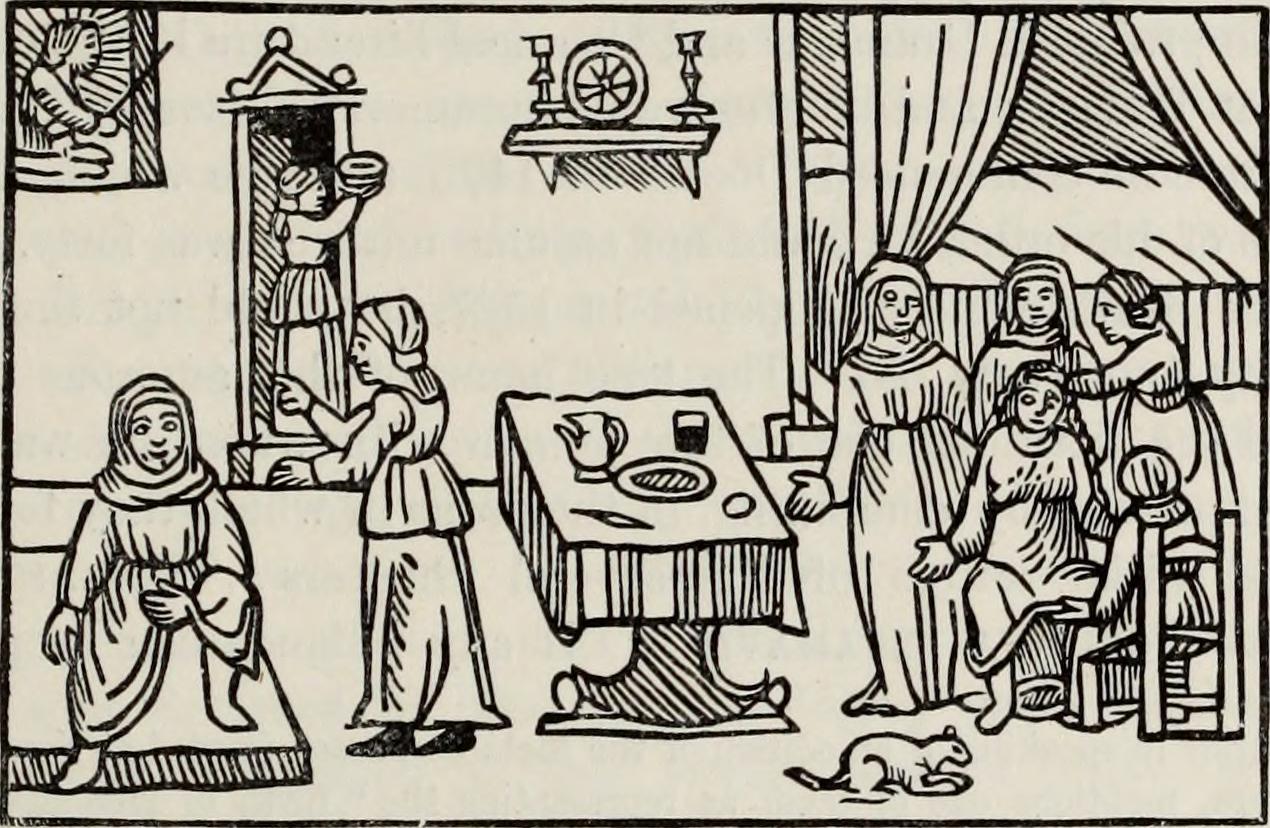Why should we continue to read Ovid’s Metamorphoses two thousand years after it was written? For some, the Metamorphoses should be read because of its immeasurable influence on literature and art. What would Shakespeare be, for instance, without the tale of Pyramus and Thisbe, the inspiration for Romeo and Juliet? What would European art be without this epic? No other work of literature, apart from the Bible, has so inspired visual artists. Ovid’s Metamorphoses has been hugely instrumental in the formulation of various later canons within the Western tradition. Yet many have rightly questioned whether this canonical status should justify Ovid’s continued centrality, arguing that the canon itself is a tool of maintaining unjust hierarchies.

For others, the Metamorphoses has been primarily a source of poetic pleasure, perhaps even an escape into the world of myth. But for many, reading Ovid’s stories of abuse can be anything but a delightful escape, and the presence of rape in the epic has made its continuing centrality in high school and college classrooms controversial. It was the Metamorphoses that gave rise to recent debates about “trigger warnings,” which arose in the aftermath of a 2015 op-ed penned by undergraduates at Columbia University. These students objected to the fact that the epic was being taught without acknowledgment of or prior warnings about its sexually violent content, a pedagogical decision that did not take into account the reality that students themselves might have been victims of such violence. These students were widely denigrated as “snowflakes” who could not handle the more disturbing aspects of “great literature,” yet it was precisely the more disturbing aspects of these texts the students were asking those teaching them to acknowledge and interrogate.
Like so many works left to us from Greco-Roman antiquity, the Metamorphoses is the product of a patriarchal culture whose sexual politics and depictions of violent rape frustrate the oft-repeated claim that ancient works offer us ennobling virtues to revere. It is hard to keep classical literature on a pedestal while acknowledging its complicity in the hierarchical abuse that continues to permeate our world, and this discomfort has led some to either avoid speaking directly to its violence or to dismiss it with a wave of the hand or with an uncritical objection to judging the past by the standards of the present.
Yet if we do not rethink these texts through the lens of the present, they will cease to have relevance for the present. The inclusion of so many stories of rape in the epic suggests, in fact, that Ovid felt such violence was worthy of critical interrogation, just as he shines a light on the negative repercussions of masculine heroics or divine power precisely in order to question, not celebrate, them. In an epic that takes forced transformation of the body as a central theme, sexual violence cannot be ignored. Rape, like metamorphosis, dehumanizes and objectifies. To ignore the theme of sexual violence, or to quickly explain it away, is in many ways to miss the point. It is also to miss the opportunity to trace the legacies of such abusive power in our own world so as to better understand and combat them. To read Ovid with an eye toward his full complexity—his beauty and his brutality—allows us to scrutinize our own thorny relationship with the past and with the ambivalent inheritance we have received from it. To wrestle with the unsavory aspects of ancient literature is to do the hard work of self-examination. It is easier to talk about love than rape or to focus on ennobling values rather than try to grasp our own human failings. Yet it is precisely this hard work that Ovid invites us to do.
Ovid still matters because he speaks to the questions that still matter to us.
Perhaps the best reason to read Ovid is simply that he gives us stories through which we can better explore ourselves and our world, and he illuminates questions about power, sexuality, gender, race, and art that humans have been debating for millennia. Ovid still matters because he speaks to the questions that still matter to us. The rapes Ovid recounts are traumatic acts of “force” (vis—a legal term for rape), often perpetrated by gods, that leave their victims permanently transformed. Repeatedly, rape is designated a “crime” (crimen), one that those in power can usually (but not always) simply get away with. When Jupiter rapes Callisto, for instance, he grips her in his embrace, revealing himself to her nec sine crimine, “not without crime.” Arachne, who weaves a tapestry depicting the gods’ abusive rapes, is said to depict caelestia crimina, “heavenly crimes.” What may seem an oxymoronic juxtaposition is par for the course in Ovid’s world—power, especially divine power, often goes hand-in-hand with abuse.
Ovid’s rapes are met not with resignation or acceptance but with horror by the characters within the epic. Such violence silences victims and leaves them wounded and transformed, both literally and figuratively. Callisto, in the wake of her assault by Jupiter, is no longer the same, nor can she tell her fellow nymphs what happened:
It’s hard not to reveal a crime with one’s
expression! She can barely lift her eyes
up from the ground. She does not stand beside
the goddess, as before, or lead the troop.
Instead, she’s silent, and her blush provides
proof for her wounded chastity.
Callisto’s psychological wound becomes a physical one in Philomela, whose rapist Tereus cuts out her tongue when she threatens to disclose his crime. The silencing of Callisto and Philomela mirrors the silencing that many rape victims continue to experience. Learning to spot patterns of rape in Ovid can in fact help us see how these patterns repeat in our own world. Just last year, a group of students in India published an article that describes their experience of reading Ovid as empowering. “We have learned to critique rape narratives in literary texts,” they write, demonstrating how this in turn has helped them interrogate systems of sexual power within their own social context.
Despite the horror and trauma the characters themselves experience, it is not always entirely clear where the narrator’s own sympathies lie. At one moment, he treats victims’ trauma with immense sympathy, while at another he compels us to view the abused through a rapist’s violent gaze. Ovid builds such ambivalence into the epic as a whole. In the tale of Arachne and Minerva, for instance, he describes two textiles, one that celebrates power and one that defies it. Both reflect aspects of Ovid’s own text. Even the genre of the Metamorphoses is contradictory—though formally an epic, it displays numerous features of elegy, tragedy, and even philosophy while flaunting or parodying many epic conventions. It is this ambivalence that invites readers in, opening the text to a myriad of perspectives and readings.
To wrestle with the unsavory aspects of ancient literature is to do the hard work of self-examination.
Because Ovid constantly positions himself both inside and outside of established literary and social hierarchies, many contemporary thinkers, writers, and artists continue to find the Metamorphoses to be fruitful soil for exploring their own work and identities. Elizabeth Colomba adopts Ovid’s ancient subject matter to highlight the absence of Black women like herself from the European artistic canon, even as she claims a position for herself within it. Writers such as Rita Dove, Paisley Rekdal, and Nina MacLaughlin explore contemporary women’s struggles by rewriting and reimagining Ovidian myth, adopting Ovid’s own focus on psychological trauma and powerlessness. Pulitzer Prize–winning poet Jericho Brown uses the Ovidian figure of Ganymede as a way of exploring enslavement and its legacy in the American South, stripping away the comforting narratives in which many take refuge. Such contemporary artists speak to Ovid’s continuing relevance for new generations, and they do so by homing in on the text’s most brutal stories.
Such adaptation of the Metamorphoses shows no signs of abating. Other recent literary retellings of Ovidian myth include Ali Smith’s Girl Meets Boy, Madeline Miller’s Circe, Mark Prins’ The Latinist, and Charlotte Higgins’ Greek Myths. In film, Céline Sciamma’s Portrait of a Lady on Fire offers a queer retelling of the Orpheus myth, while stage productions include established favorites like Mary Zimmerman’s Metamorphoses and more recent offerings like the one-person play A Poem and a Mistake by Cheri Magid and Sarah Baskin. It feels like Ovid is everywhere. And as he is transformed for new times and places, his text resonates with new meanings that bring the present into conversation with the past.
The Metamorphoses holds up a kaleidoscopic lens to the modern world, one that helps us reflect upon our own (in)humanity, our vulnerability, and our capacity for change. Ovid poignantly explores the innate fragility of the human body, how subject it is to forces beyond our control, and he recognizes how traumatic such lack of agency can be. Humans in Ovid’s world are something of a contradiction, sculpted with divine intelligence imbued into mortal clay. Ours is an endless struggle to surpass our bodies’ limitations, and, like Icarus or Phaethon, we risk constant failure and death. Human grief, especially that of women, is a recurrent Ovidian theme. Grief transforms us, as it does Clymene or Niobe or Hecuba. There is indeed no greater emblem of human powerlessness than the grieving parent, and Ovid’s accounts of such grief resonate across time. It is hard, for instance, not to read Phillis Wheatley’s translation of Ovid’s Niobe episode as a poignant reframing of her own family’s experience of such powerlessness when she was kidnapped and enslaved as a child.
Ovid illuminates the human obsession with power and how it can transform both its wielder and its victim. The desire for power can turn even the most sympathetic figures into monsters. One of Ovid’s most perennially popular characters is the grieving father Daedalus, who loses his son Icarus as they fly across the sea. But few people remember Ovid’s other story about Daedalus, how he murders his own nephew by throwing him from a high place, the Acropolis—the motive: he was jealous of the boy’s artistic prowess and did not want to be outdone. Nobody is immune from power’s lure. One of the most dangerous things we can do, then as now, is inadvertently catch the notice of those in power. Before Jupiter rapes Callisto, he first sees her. Before Juno, in turn, transforms her, she first directs her gaze her way. On the other hand, the gaze that is not backed up by power can enervate and transform its wielder, like Clytie gazing upon the sun. Ovid’s stories help us explore the tangled power dynamics of the gaze in our own culture as well.
Ovid treats the connections between desire, gender, and the body in surprisingly relevant ways, showing that what we think of as modern concepts such as gender fluidity or asexuality are hardly new concepts at all. Time and again we meet characters who defy heteronormative expectations of gender and sexuality. Daphne, like many other nymphs in the epic, has no interest in marriage or sex, preferring to stay perpetually a virgin and to devote herself to the asexual goddess Diana. A transgender character such as Caeneus is at home in his new male form immediately, while transformed characters such as Io and Callisto experience the painful dysmorphia that can ensue when living in an exterior form that is misaligned with one’s interior being.
The Metamorphoses holds up a kaleidoscopic lens to the modern world, one that helps us reflect upon our own (in)humanity, our vulnerability, and our capacity for change.
When I turn to Ovid, I do so to find hope or perspective in moments of crisis and despair. Ovid continually reminds his readers that, no matter how voiceless they feel, humans will always strive toward expression and agency. Tereus can render Philomela voiceless, but he does not silence her. Apollo may torture the satyr Marsyas for his artistic defiance, but he cannot stop the nymphs and woodland gods from weeping for him. Power can only extend so far. As Ovid tells us in the epic’s closing lines, not even Jupiter himself could destroy Ovid’s poetic achievement. Vivam, “I will live,” is the last, defiant word of this epic song.
The last few years have brought intense, swift change to the world, ushering in a time of disease and fire and flood and war. Ovid never lets us forget that such chaos can be unleashed into our world at any moment, with staggering human costs. In his epic, floods wipe out entire populations, fires incinerate mountains, and plague taints the very air people breathe. Crisis is unavoidable, but the world is equally resilient, and change inevitable. What resonates with me the most when I read the Metamorphoses is this promise of endless metamorphosis. I do not yet know what the future holds, but I do know, if I am to believe Ovid, that it will leave the world transformed.
Excerpted and adapted from the introduction of Ovid‘s Metamorphoses by Stephanie McCarter, published by Penguin Classics, an imprint of Penguin Publishing Group, a division of Penguin Random House, LLC. Introduction and suggestions for further reading copyright © 2022 by Stephanie McCarter.
























































